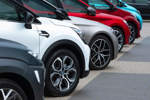Important safety systems, aimed at reducing incidents of distracted driving, risk being switched off due to frequent false alarms, new research suggests.
In-car cameras that monitor the driver to detect if they are distracted became mandatory for new cars in the EU from July, last year.
Tests conducted on the systems fitted to six new cars by What Car? found three of them so annoying and distracting that they were highly likely to be turned off by drivers.
It drove all six cars twice around a 10-mile test loop that replicated rural A-roads and country lanes.
On the first lap, the driver kept their eyes on the road ahead, and on the second lap the driver performed four actions that could be deemed distracted driving: they looked across at the infotainment screen, leaned towards the infotainment screen, looked out of the driver’s side window and looked downwards into their lap, each one for three seconds.
The worst-performing system, according to What Car?, was in the Leapmotor C10.
It issued three audio and visual warnings when the test driver was looking at the road ahead and only went off twice when the distracted driving manoeuvres were done.
The system in an MG HS also provided two false alarms on the first lap, although it did issue alerts for all four distracted driving moves.
In contrast, the system in the Mazda CX-80 worked seamlessly, providing warnings during every potentially dangerous manoeuvre, but not when the driver was concentrating.
What Car? consumer editor, Claire Evans, said: “A well-engineered driver monitoring system is an important safety aid that should help to stop drivers from becoming dangerously distracted by focusing on the infotainment touchscreen for too long, and from breaking the law by using a handheld mobile phone.
“However, it’s crucial that car makers work harder to ensure their systems only intervene when there is a genuine risk of an accident and minimise the number of false alarms.”
She added: “Car safety organisation, Euro NCAP, also needs to introduce far more stringent testing of these systems, penalising those that are poorly integrated into cars instead of simply rewarding manufacturers for including the technology.”
























Login to comment
Comments
No comments have been made yet.